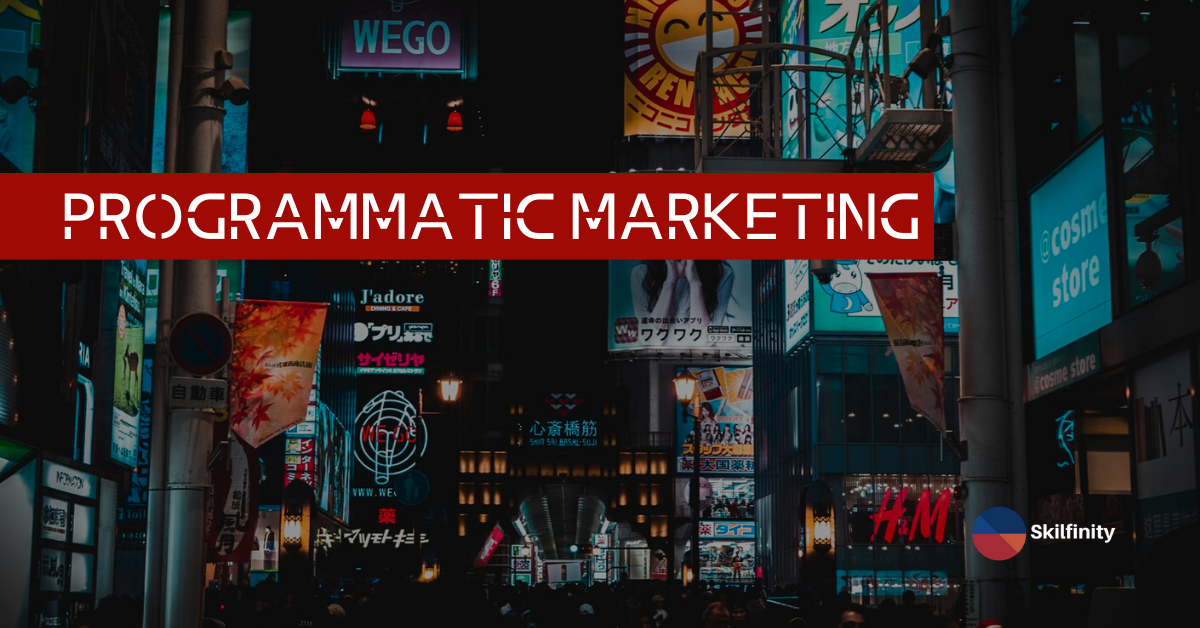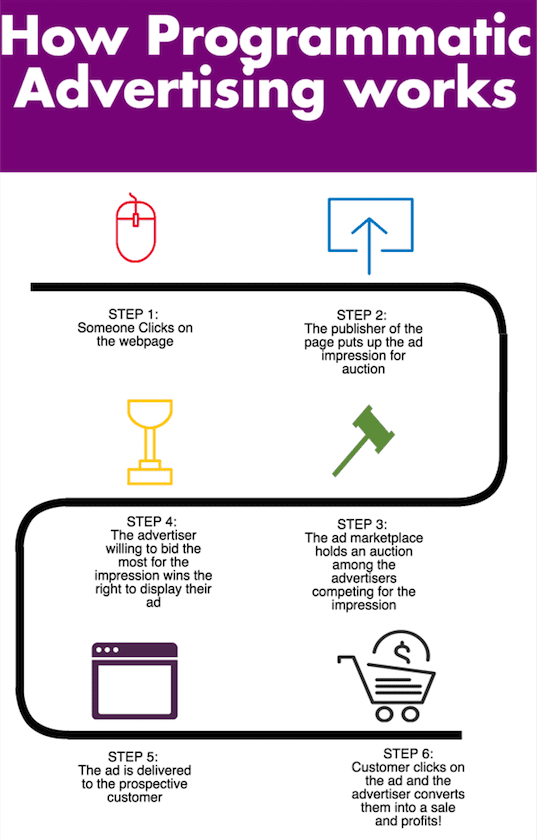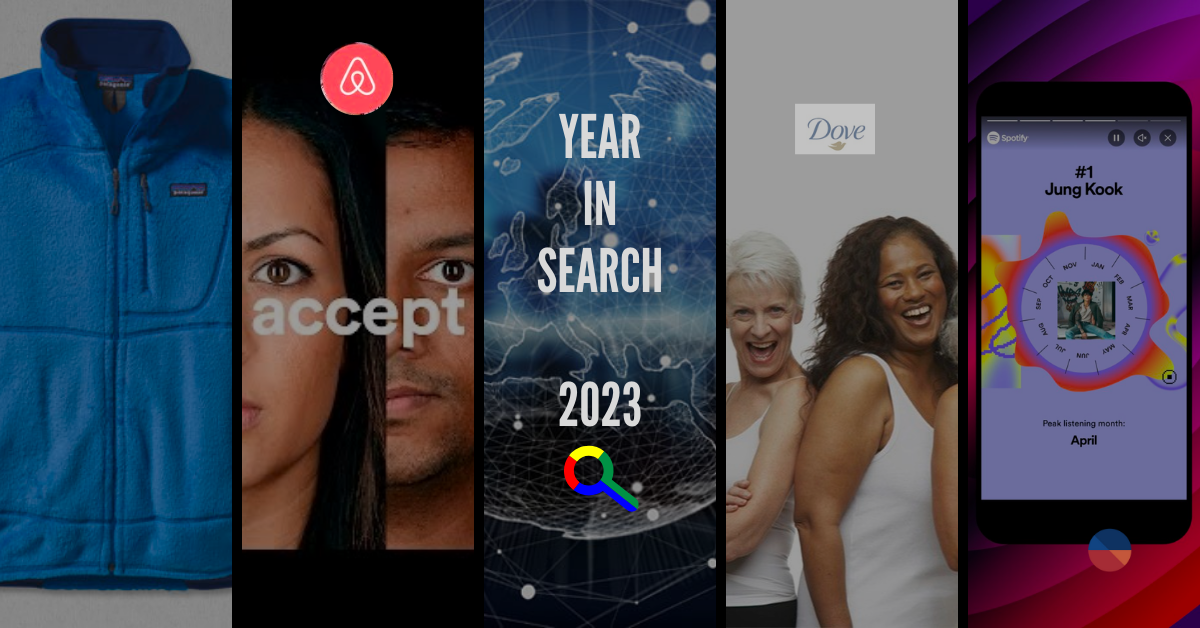Programmatic Marketing – Why, How and the Opportunities.
According to Forrester, programmatic will prevail in digital ad spending in 2019 and by the end of 2023 will reach $25B, which is terrific in comparison to $11.4 billion in 2017.
However, programmatic has continued to be a big display advertising buzz word across the paid media space for almost a decade, but it still isn’t widely adopted by managers or businesses because there seems to be a disconnect between what it is, how to get started, and what happens after deciding to dive into programmatic advertising.
Let’s start with the basics first.
What is Programmatic Marketing?
Programmatic advertising means using AI to automate ad buying so you can target more specific audiences. Real-time bidding, for example, is a type of programmatic ad buying. This automation is much more efficient and fast, which means higher conversions and lower customer acquisition costs.
The opportunity: personalisation
Programmatic marketing gives marketers the opportunity to personalise at scale and to reach different customers with different creative messaging across media channels and partners.
Because advertisers buy impressions individually (not grouped by thousands or millions), each ad marketplace allows an advertiser to serve one specific ad to one single consumer in one single context.
Programmatic technology, therefore, offers the promise of ‘life-pattern marketing’, enabling marketers to reach consumers at key moments in their days with powerful messaging. Along with a response signal, this technology can identify what resonates with individuals at the moment-to-moment level to optimise the timing, relevance and effectiveness of the ads they see.
How does Programmatic Marketing work?
When anyone clicks on a web page that has advertising space that is configured for programmatic advertising, the publisher of the page puts up an ad impression for auction in an ad marketplace. The ad marketplace then runs an auction among advertisers interested in displaying an ad to that specific customer that just click on the page. There may be many advertisers competing in this auction, and whichever one ultimately is willing to bid the most wins the auction and then their ad is displayed to the customer when the page loads.
Because the process is automated and the maximum price each advertiser is willing to bid for the impression has already been programmed in, the auction can be completed within the milliseconds it takes for the page to load. Our simple infographic takes you through 6 steps that explain how programmatic marketing works.
What are the advantages of Programmatic Marketing?
Programmatic marketing opens up a series of opportunities, which would not be possible if ad placement was done manually, as it has been done in the past. It allows advertisers to procure digital media without having to pre-negotiate a price, so they pay only for the relevant impression that they actually receive. They can also sign up for a minimum number of impressions or a minimum budget, which makes digital advertising more flexible, and they can buy digital media across publishers, which reduced administration costs.
But the opportunities are much greater than just making ad buying easier and more flexible. Because programmatic marketing means bids are arranged for each individual accessing the site people can be targeted to a far greater extent than before.
Using customer data, Programmatic technology can identify what resonates with each individual and target him or her on the sites on the sites they are most likely to engage with and at the time they are most likely to engage.
so far so good. but is programmatic is the right next step for you? to help evaluate,
Top 4 Questions to Ask
There are a few questions that you can ask yourself or the brand(s) you work with to give you a roadmap to getting started. These same questions can also be turned to ask a potential vendor if they might fit your needs, but we will discuss that in the resources section.
Here are what I consider to be the top questions to ask:
- What is my budget?
- Make sure you have enough budget or can get extra budget to start a new platform like programmatic. Some vendors require spend minimums or contract lengths. Also, budget can determine data significance; so, can you get enough data out of your budget to make the campaign worthwhile.
- Do I value attribution?
- If you are not currently looking at any sort of attribution and only looking at last touch or some sort of direct correlation, you may need to reconsider how you look at indirect value, as programmatic is usually a higher-funnel option that can help produce more results down the funnel, but does not always create instant value.
- Do I have outside data that I can use to inform my targeting?
- Having CRM data, persona insights, and other helpful data can help inform the system to build up better results.
- Have a large product offering?
- If you have a lot of products that target different personas, programmatic can be used to drill down to micro-personas and target the exact customer type that matches with that product. Then, show hyper relevant ads based on the product and persona.
If you are able to answer yes to one, some, or all of these questions, then naturally, Programmatic might be a great next step to test out. But, before you do, there are still some questions to be answered and guides to explore, that will help you navigate the world of programmatic.
What are the different formats of programmatic advertising?
Programmatic advertising now covers a range of different advertising formats. A decade ago it was mainly just display advertising but now there a range of different and growing options.
Display
The oldest format of programmatic advertising is display. However, rather than staying static, ads have gone dynamic! Constant technological developments, mobile optimisation and better use of data have seen new opportunities emerge. With the rise of new technology, many marketers have embraced programmatic creative strategies that target viewers, with the right offer, at the right time.
Read more about dynamic strategies for display advertising here.
Video
Buying and serving digital video programmatically – across channels – is now a key strategy for marketers. Indeed, programmatic Video ad spend is predicted to be $13.4 billion in 2019 and account 76.5% of how all digital video spent.
There are two distinct types of programmatic video: instream and outstream (with in-banner video sometimes classified as a type of outstream ad). You can read more about digital video here.
Native and social
These are programmatic ads that blend into the content either on a website, social network or other application. For example, it could for sponsored content, so setting up contextual targeting as well as tailoring your ads is very important.
What’s more, DSPs now offer the chance for advertisers to buy programmatically across the major social networks – with social video particularly popular.
Voice
The development of Amazon’s Alexa and the rise of streaming apps such as Spotify, have seen the emergence (or reemergence) of another format: voice. This format offers a rich source of both contextual and user focused targeting. It is quickly maturing too, with Google offering advertisers the chance to buy programmatic audio ads through it’s DSP.
Digital out-of-home (DOOH)
Programmatic is entering the world of out-of-home advertising, with the adoption of digital signage. The cumbersome production process of advertiser, agency, media seller, and printer is set for extinction. In its place, integration across existing programmatic platforms is offering the possibility of real-time DOOH ad optimisation and reactivity.
Television
Currently, programmatic television ad spend is not big (in the US it accounts for just 2.5% of total ad spend). Yet, many large industry players, such as Google, SKY and Netflix, are building the infrastructure needed to support the move to programmatic TV. However, out of the programmatic formats mentioned, the format is in need of more development.
Conclusion
Data is becoming increasingly important to marketers and programmatic marketing thrives on quality data. Knowing the basics of programmatic advertising is essential for digital marketers. While it may appear complex at first, it is a simple and refined process that has improved how digital marketing is performed.
Furthermore, it is the first step towards using more advanced forms of advertising. For example, in display advertising dynamic creative optimisation (DCO) takes programmatic to the next level.
Effective programmatic marketing combines data from the audience (including demographics, location, interests and behaviour) and the environment to provide a more engaging, relevant experience. This data can be first, second or third-party, with first-party data (gathered from owned channels) providing the greatest insight into customers.
Programmatic is really part of the next wave in the industry and we reckon will be one of the biggest trends in marketing in 2020. It will continue to grow and adapt over the decade, not only in display, but other areas as well. We are already seeing expansion into audio, video and tv, and even billboards. Also, now with the continued expansion of attribution modelling, the touchpoints are becoming easier to understand and optimize for results.







